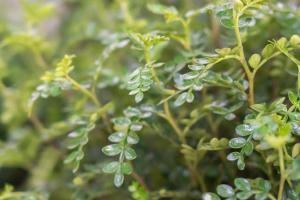Does Lime Kill Moss and Lichen in Potted Plants?
Moss and lichen can be a concern for gardeners as they can invade potted plants, compete with desirable plants for nutrients, and harbor pests and diseases. There are various methods to control moss and lichen growth in potted plants, and one of the most commonly suggested is the use of lime. However, the question remains: Does lime really kill moss and lichen in potted plants?
What is Lime?
Lime is a widely used soil amendment made from crushed limestone or dolomite. It is commonly added to soil to raise its pH and reduce its acidity. Lime can also provide plants with essential nutrients like calcium and magnesium. There are different forms of lime, such as hydrated lime and agricultural lime, that vary in their application and effectiveness.
How Does Lime Control Moss and Lichen?
Lime is believed to work as a natural deterrent against moss and lichen growth in potted plants. It raises the soil pH, making it less hospitable for these organisms to thrive. Moss and lichen prefer acidic soil and thrive in areas with high moisture and low sunlight. By increasing the soil pH with lime, it creates a less favorable environment for moss and lichen to grow.
Is Lime Effective in Killing Moss and Lichen in Potted Plants?
While lime can help control moss and lichen in potted plants, it is not an effective method for killing them. Lime works as a preventative measure, but it cannot eliminate existing moss and lichen in the soil or on the plant's surface. Moss and lichen often have a root-like structure that can develop into the soil, making it difficult to remove them completely with lime.
What are the Alternatives to Lime for Controlling Moss and Lichen?
If lime is not effective in killing moss and lichen in potted plants, what are the alternative solutions? There are several methods that gardeners can use to control moss and lichen growth in potted plants such as:
Manual removal: Gently removing moss and lichen from the soil or plant surface by hand is one effective method. Use a soft brush or cloth to remove the growth without damaging the plants.
Improve ventilation: Moss and lichen thrive in areas with high humidity and low ventilation. Improving ventilation in the growing area can help control its growth.
Reduce watering: Overwatering can create the perfect environment for moss and lichen growth. Reducing watering frequency can help control its growth.
Use of fungicides: There are several fungicides available to control moss and lichen growth in potted plants. Consult with a professional to select the most effective one for your plant and growing area.
Conclusion
Lime is a useful soil amendment for raising pH in acidic soil and providing essential nutrients to plants. However, it is not an effective method for killing existing moss and lichen in potted plants. Gardeners should use other control measures like manual removal, improving ventilation, reducing watering frequency, and using fungicides to control moss and lichen growth in potted plants.

 how many times do yo...
how many times do yo... how many planted tre...
how many planted tre... how many pine trees ...
how many pine trees ... how many pecan trees...
how many pecan trees... how many plants comp...
how many plants comp... how many plants can ...
how many plants can ... how many plants and ...
how many plants and ... how many pepper plan...
how many pepper plan...
































